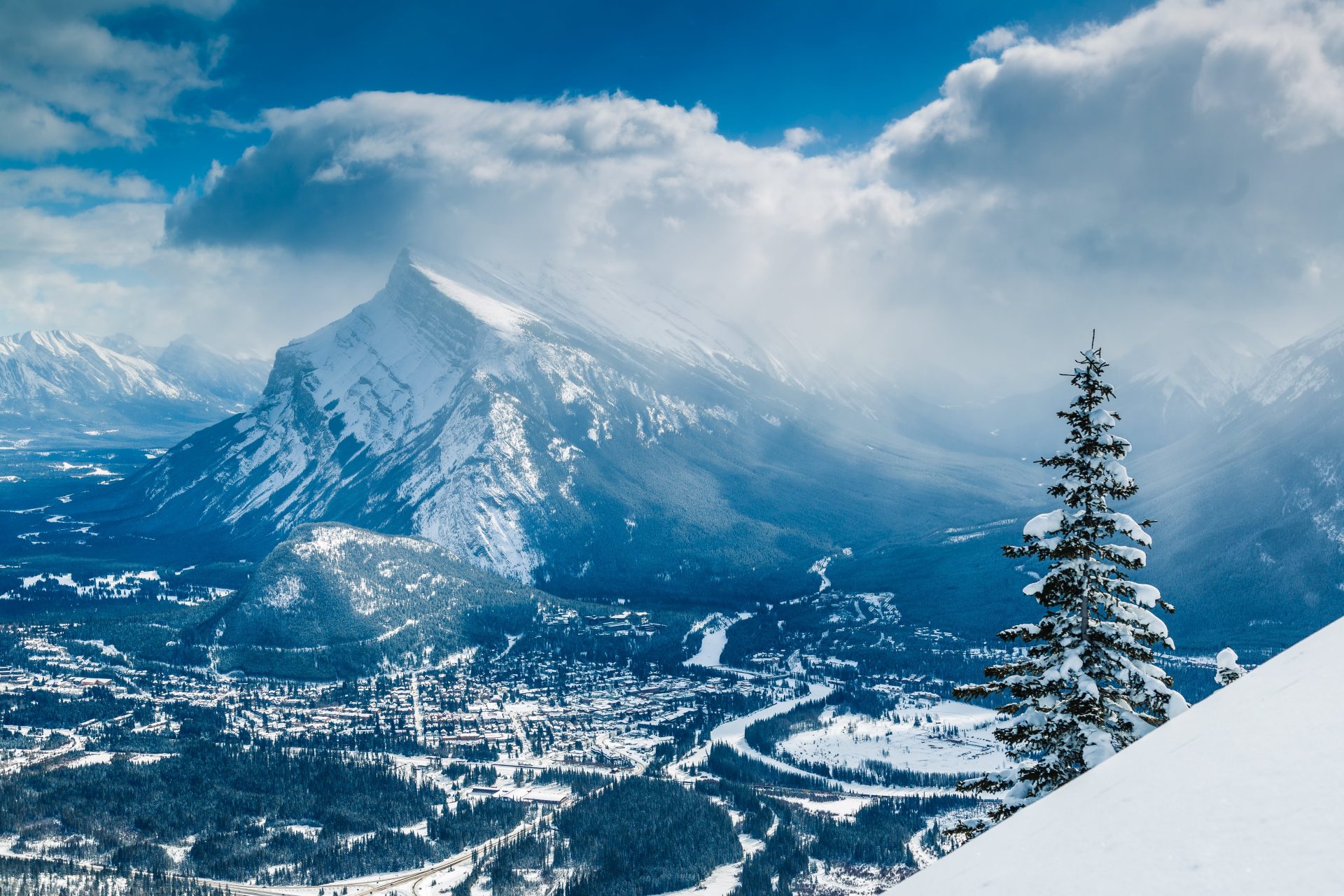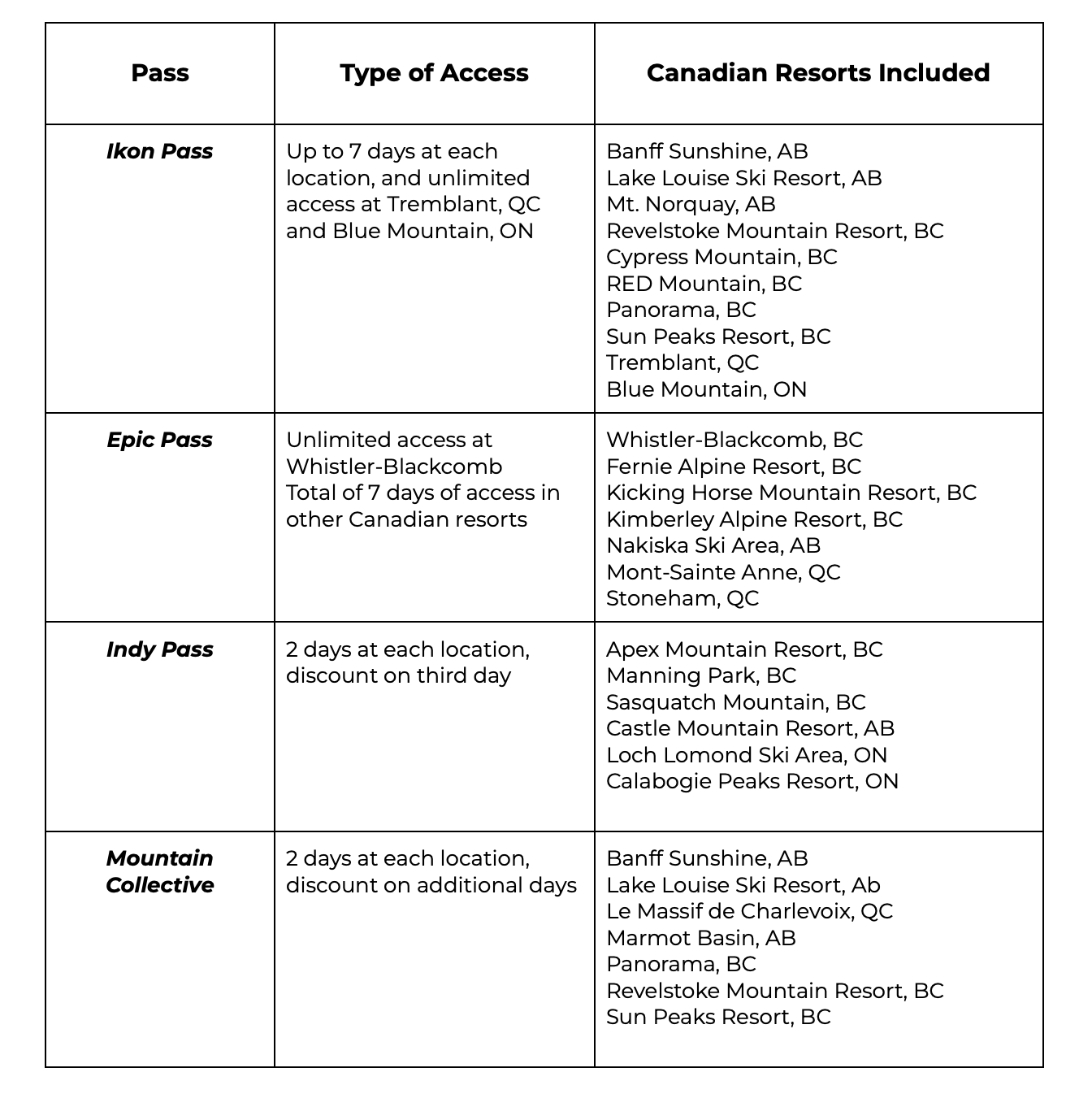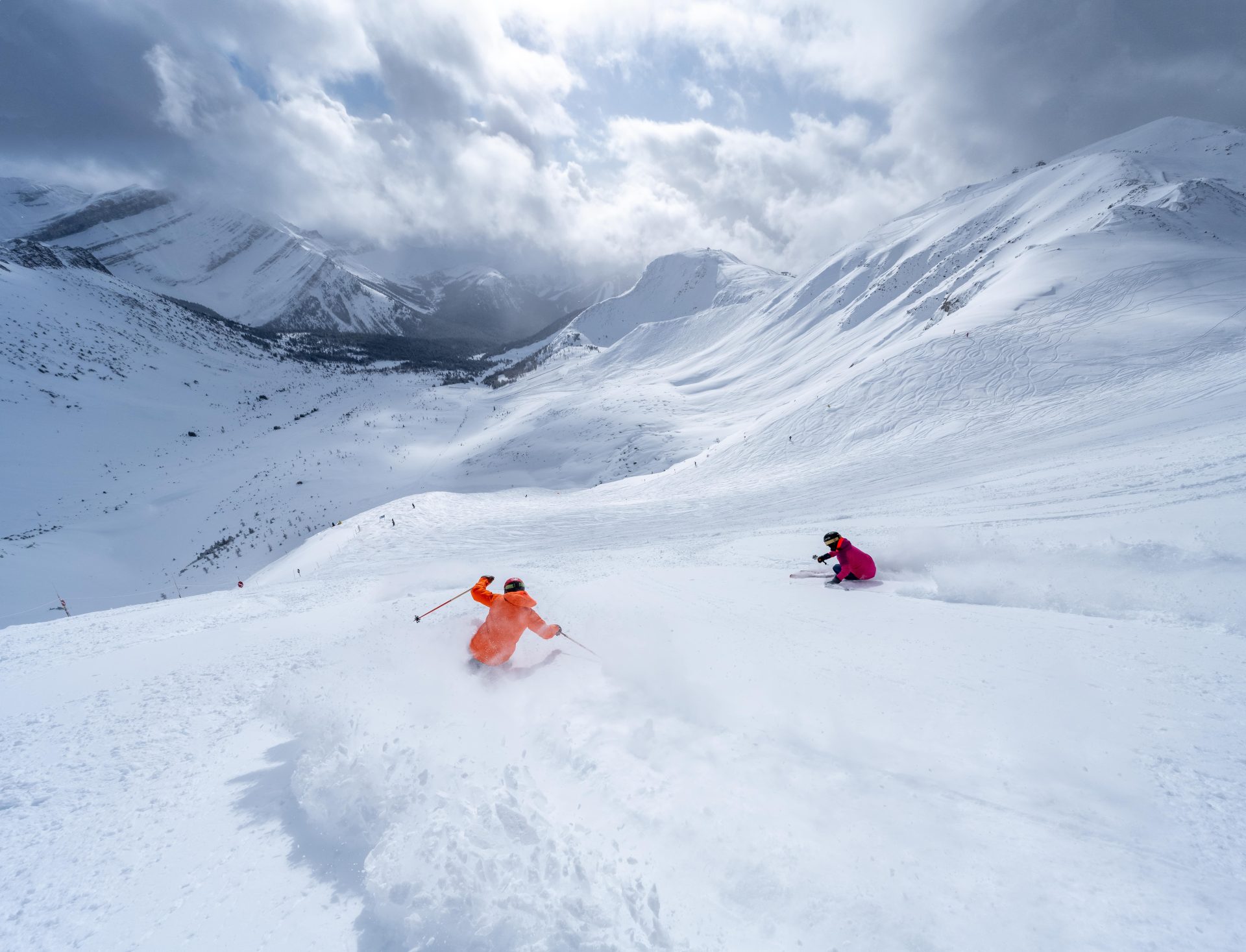
With lift ticket prices higher than ever this year, financial factors are top of mind for many people when planning their ski season adventures. Since most major US ski resorts are among the more expensive and busiest, international ski resorts are looking more and more attractive by the day. You may be considering Japan, or the European mountain ranges as potential destinations for an international adventure this year, but looking closer to home with a trip to Canada could lead you to the best deals and the best skiing. Canadian ski resorts offer unparalleled terrain and snow conditions, reasonable costs, stunning views and wildlife, friendly locals, and no jet lag accompanying travel to Europe or Asia.
There are plenty of explanations why skiing in Canada should be on your calendar this year; here are some of the top benefits to consider.
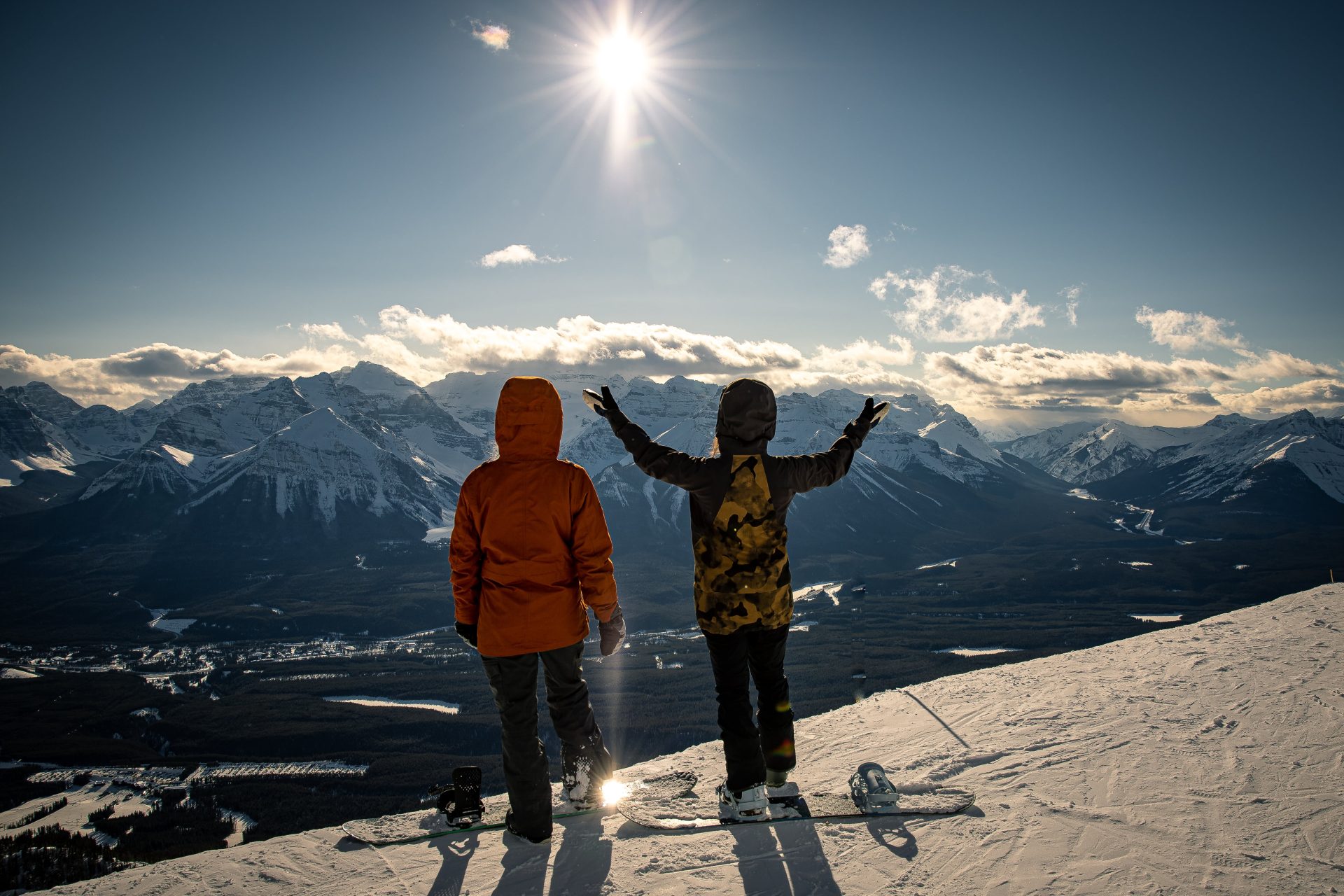
Financial Advantage of a Trip to Canada
Similarly to the rest of the world, lift ticket prices have also been increasing in Canada in recent years; however, they still tend to be lower than those of comparable resorts in the US. For example, Whistler-Blackcomb, BC, has over 8,000 acres of skiable terrain and 5,000 ft of vertical, making it significantly larger than Vail, CO, and the largest destination in North America, yet an adult day pass during peak season at Whistler-Blackcomb, BC costs $229 CAD and the same ticket at Vail, CO will be $270 USD this year. At first glance, the prices don’t seem that different, but with the current exchange rates ($1 USD = $1.35 CAD at the time of writing), Whistler-Blackcomb, BC, is almost $100 USD cheaper.
World-renowned resorts like Lake Louise, AB, and Banff Sunshine Village, AB—both of which are comparable in acreage and vertical to Mammoth Mountain, CA—are even more affordable, with both of them charging just over $90 USD for an adult day pass last year (a ticket at Mammoth Mountain, CA this year will set you back $259 USD). The current exchange rate between USD and CAD will make your entire trip to Canada much more affordable. To approximate how much you’re saving on your adventures in Canada, consider every price in CAD as having a 25% discount just for you.
Flights from the US to Canada are also cheaper than traveling to Europe or Japan, and you avoid losing any time to jetlag. Depending on where you’re coming from, you might even be able to start your trip by driving into Canada and through the beautiful Rockies.
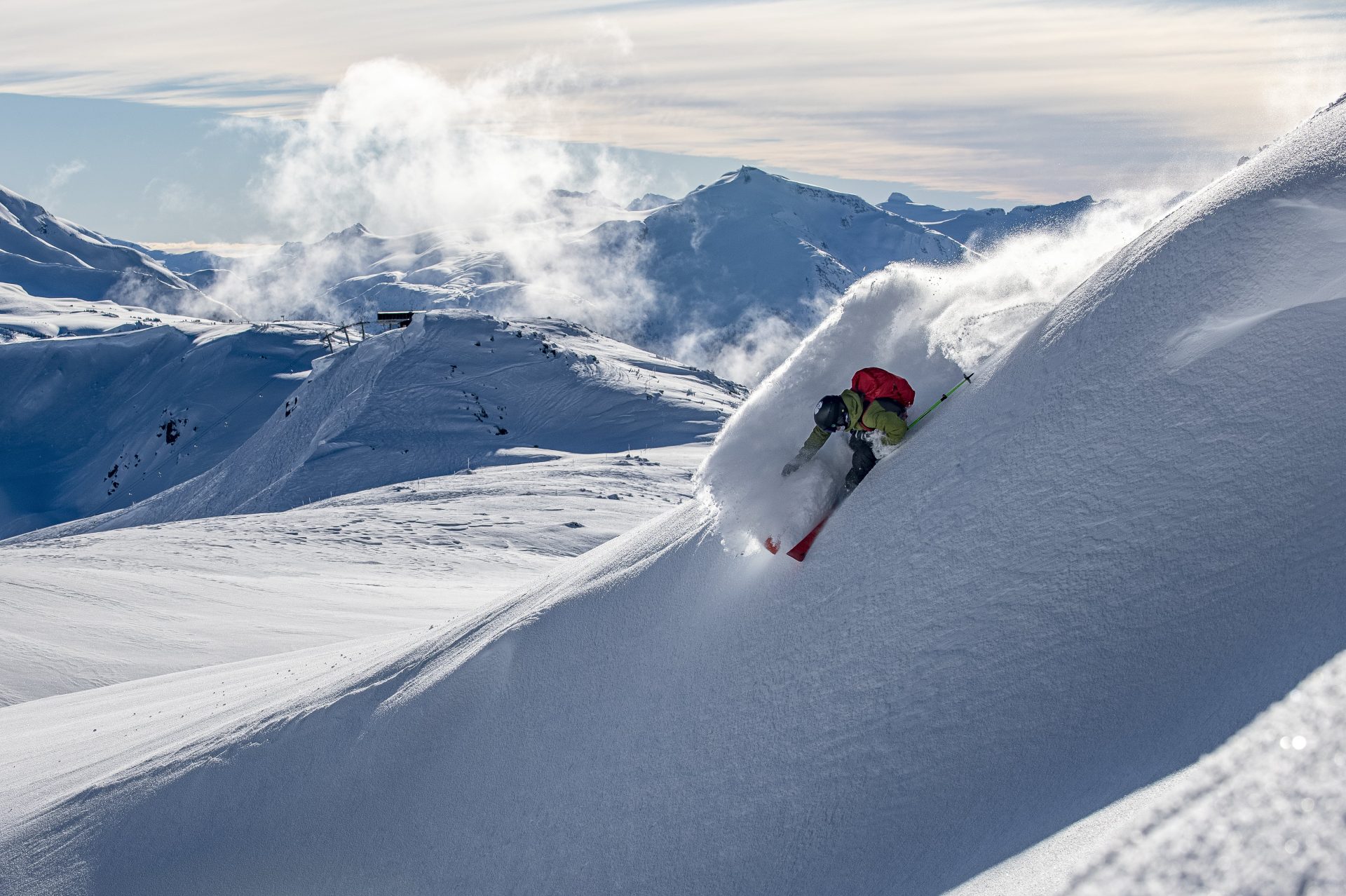
A Note on Multi-Resort Passes
If you already have or plan to purchase a multi-resort ski pass for the 2023/24 season, there’s a good chance that your pass will already include access to some Canadian ski resorts. Check out the table below to see what your pass includes.
If you’re going to be spending a significant amount of time in the Canadian snow, you could also consider purchasing one of these Canadian multi-resort passes:
- Rocky Mountain Passport: Unlimited access at Mt. Norquay, AB; Lake Louise Ski Resort, AB; Banff Sunshine, AB; Nakiska Ski Resort, AB; Fernie Alpine Resort, BC; Kimberley Alpine Resort, BC, and Marmot Basin, AB.
- Super Pass: Unlimited access at Fernie Alpine Resort, BC; Kicking Horse Mountain Resort, BC; Kimberley Alpine Resort, BC; Nakiska Ski Area, AB; and Lake Louise Ski Resort, AB.
- RCR Rockies Pass: Unlimited access at Fernie Alpine Resort, BC, Kicking Horse Mountain Resort, BC, Kimberley Alpine Resort, BC, and Nakiska Ski Area, AB.
- SkiBig3 Season Pass: Unlimited access at Banff Sunshine, AB, Lake Louise Ski Resort, AB, and Mt. Norquay, AB.
Speak to a Mountain Travel Expert at Ski.com to maximize the exchange rates for a ski trip to Canada, with added value, as they offer free trip planning services and quotes.
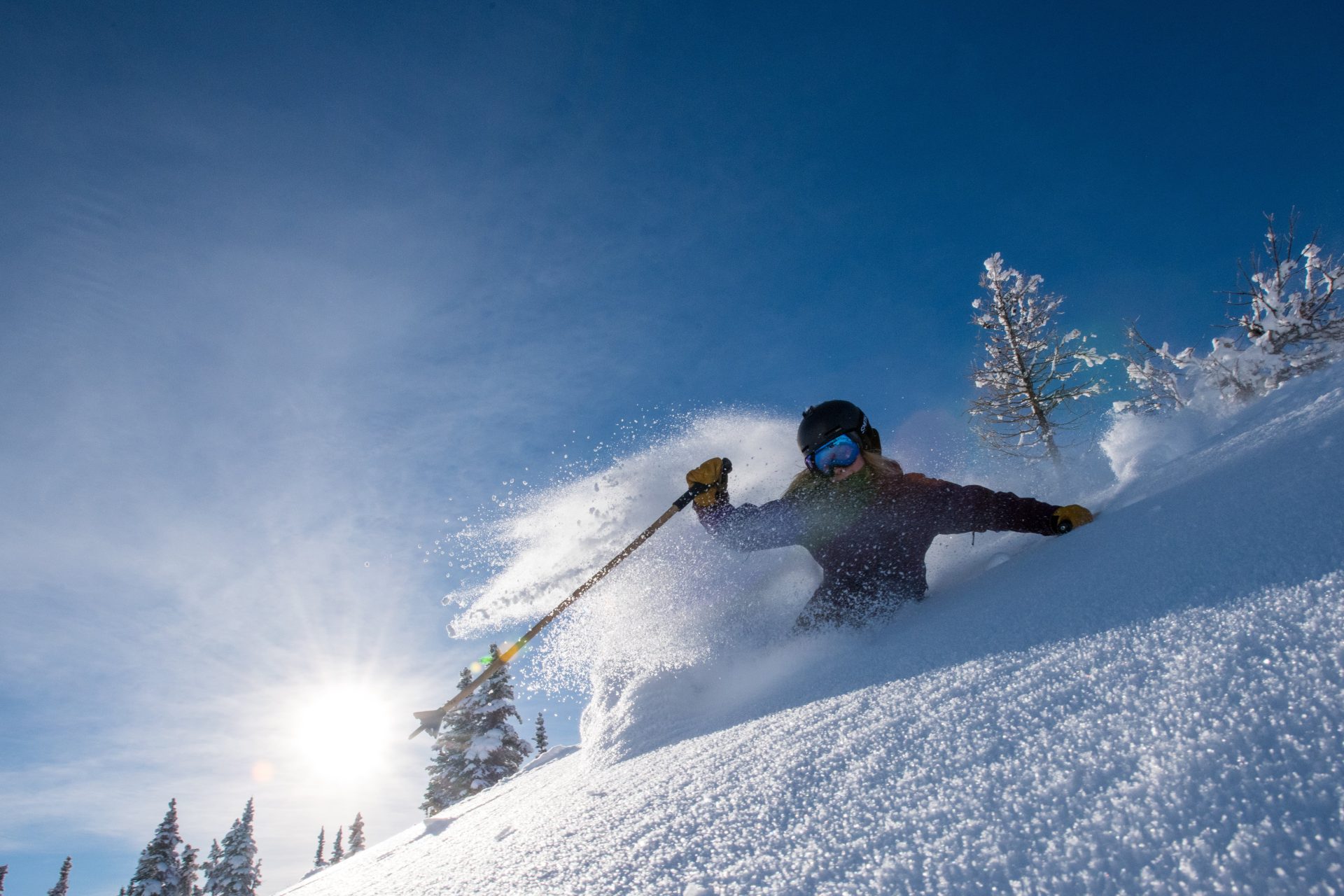
Terrain and Snow Quality
Even without Canada’s appealing exchange rate benefits, the incredible quality of snow and ski terrain would be enough to warrant a trip up north this year. One of the greatest advantages of Canadian skiing comes from the dry, cold climate and high altitude of many ski resorts. These conditions are the perfect storm that creates Canada’s signature light, dry, and abundant powder for enjoyable skiing.
The average temperatures are not significantly lower than those of ski resorts in the US; however, the shallower angle of the sun means that the slopes suffer less melting, ensuring that powder remains light and fluffy, and the ski season can last until May, occasionally even longer. March is a particularly great month for skiing in Canada; chances are you’ll score a bluebird day with piles of powder and fewer crowds than in peak season.
Canadian resorts cater to a wide variety of skiers, from experts either venturing into the sidecountry or backcountry or looking for the big mountain experience within the safety of a fully-patrolled ski resort to new skiers and families who want something a little tamer. If you have young children, then Canada would be a perfect fit for you since lift ticket prices are usually highly affordable for kids, and Canadian ski schools have excellent programs and instructors to get your little ones out on the slopes, which are less crowded than major destinations in the US.
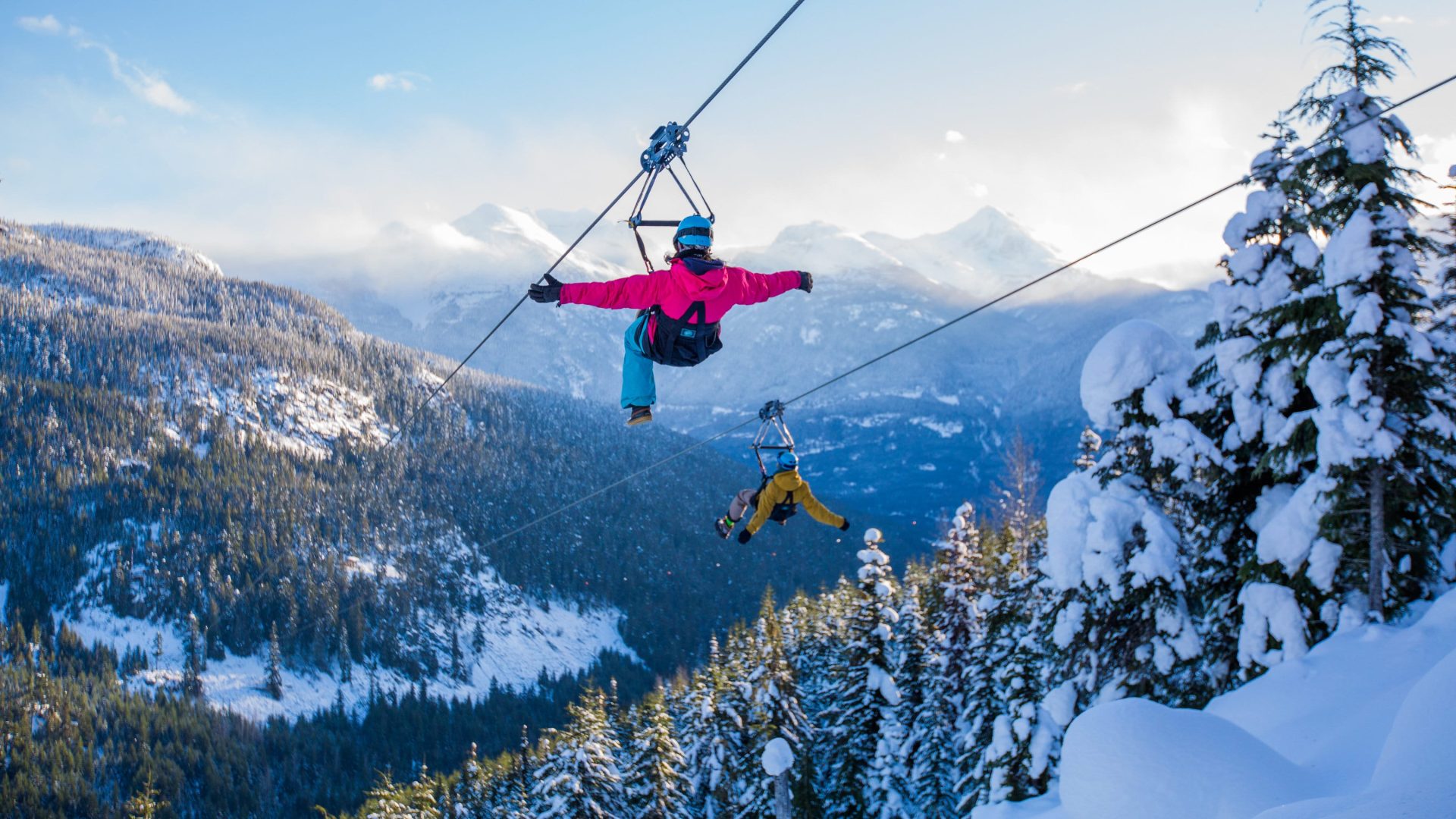
Heli-Skiing and Cat-Skiing
Suppose you’re interested in rolling the savings from the exchange rates into upgrading your ski trip to a truly unforgettable adventure. In that case, Canada has no shortage of opportunities for you to venture into the backcountry. Canada is the birthplace of heli-skiing, and Canadian companies currently take up 80% of the world’s market share of heli-skiing excursions. Whistler-Blackcomb, BC, is one of the hotspots for heli-skiing, with options for experienced heli-skiers and first-timers.
If helicopters are a little out of your comfort zone, but you still want to experience the deep backcountry, then cat skiing could be perfect for you. You climb aboard the snowcat, and it’ll drive you, your buddies, and your guide to breathtaking limited-access spots in the mountains, with fresh lines for everyone guaranteed! Cat skiing is also more accessible for less advanced skiers since the guides can tailor your routes to the group’s comfort level.
Connect with a Mountain Travel Expert at Ski.com to get all the info you’ll need for booking your dream heli or snowcat adventure in Canada.
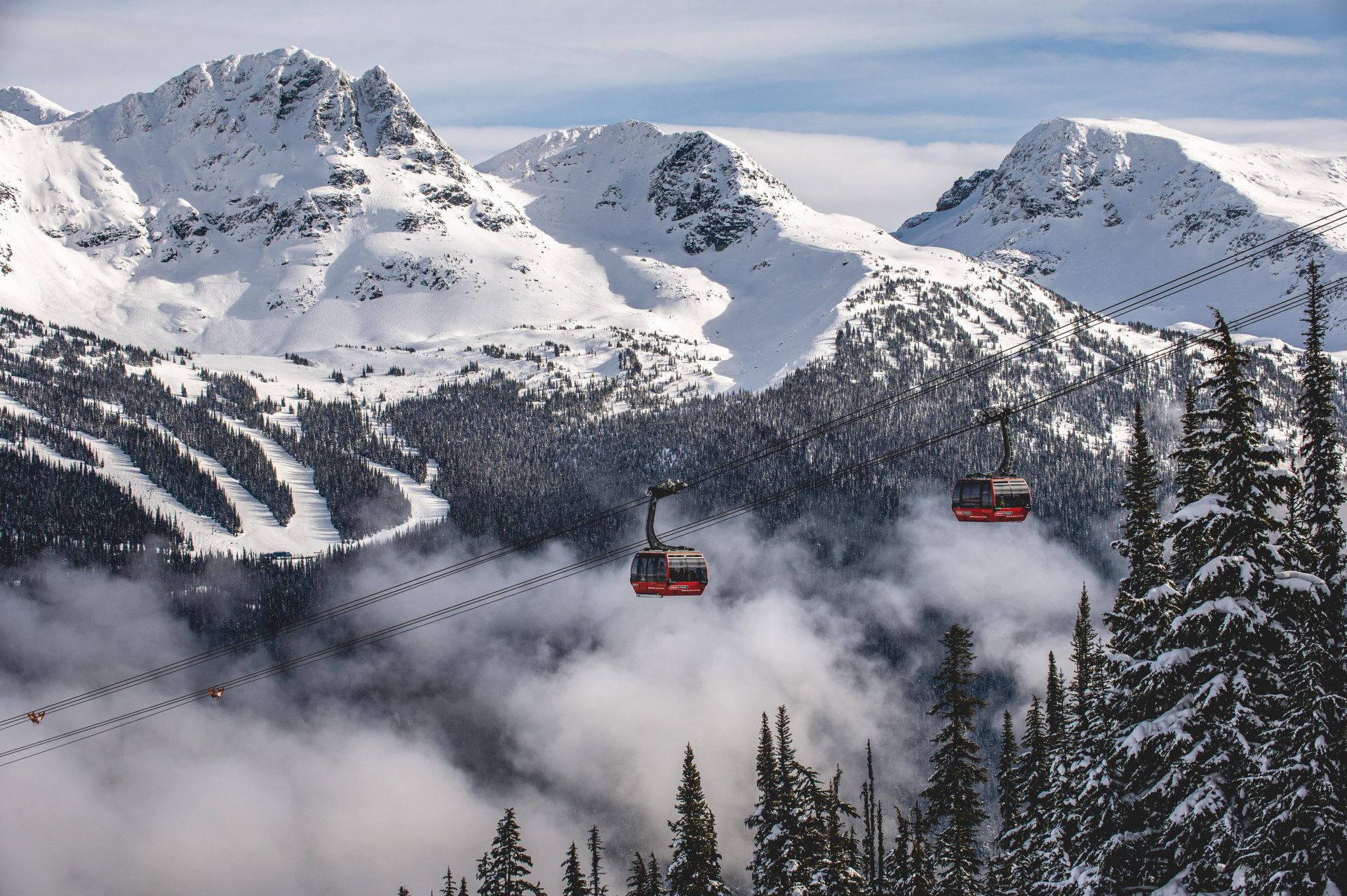
Infrastructure, Culture, and Dining
Since Canadian ski resorts are typically newer than European resorts, the lift infrastructure and mountain villages are well-maintained and modernized. In particular, Whistler-Blackcomb, BC, upgraded both the Creekside Gondola from a 6-person capacity to a 10-person capacity and the Big Red high-speed chairlift from a 4-seat chair to a 6-seat chair last December and the Fitzsimmons Express lift is currently being upgraded from a 4-seat chair to an 8-seat chair (scheduled to be complete by opening day). Upgrades like this ensure that the crowds and lift lineups remain manageable so you can spend time on the slopes instead of waiting in line. If you spend a day skiing at Banff Sunshine, AB, you can try Canada’s only heated chairlift, a welcome treat on extra chilly days.
Because many ski villages in Canada were created primarily to serve skiing communities, Canadian resorts often offer ski-in-ski-out accommodation, meaning less time commuting to the hill and finding a parking spot. You can roll out of bed and ski down your street to the lift lines.
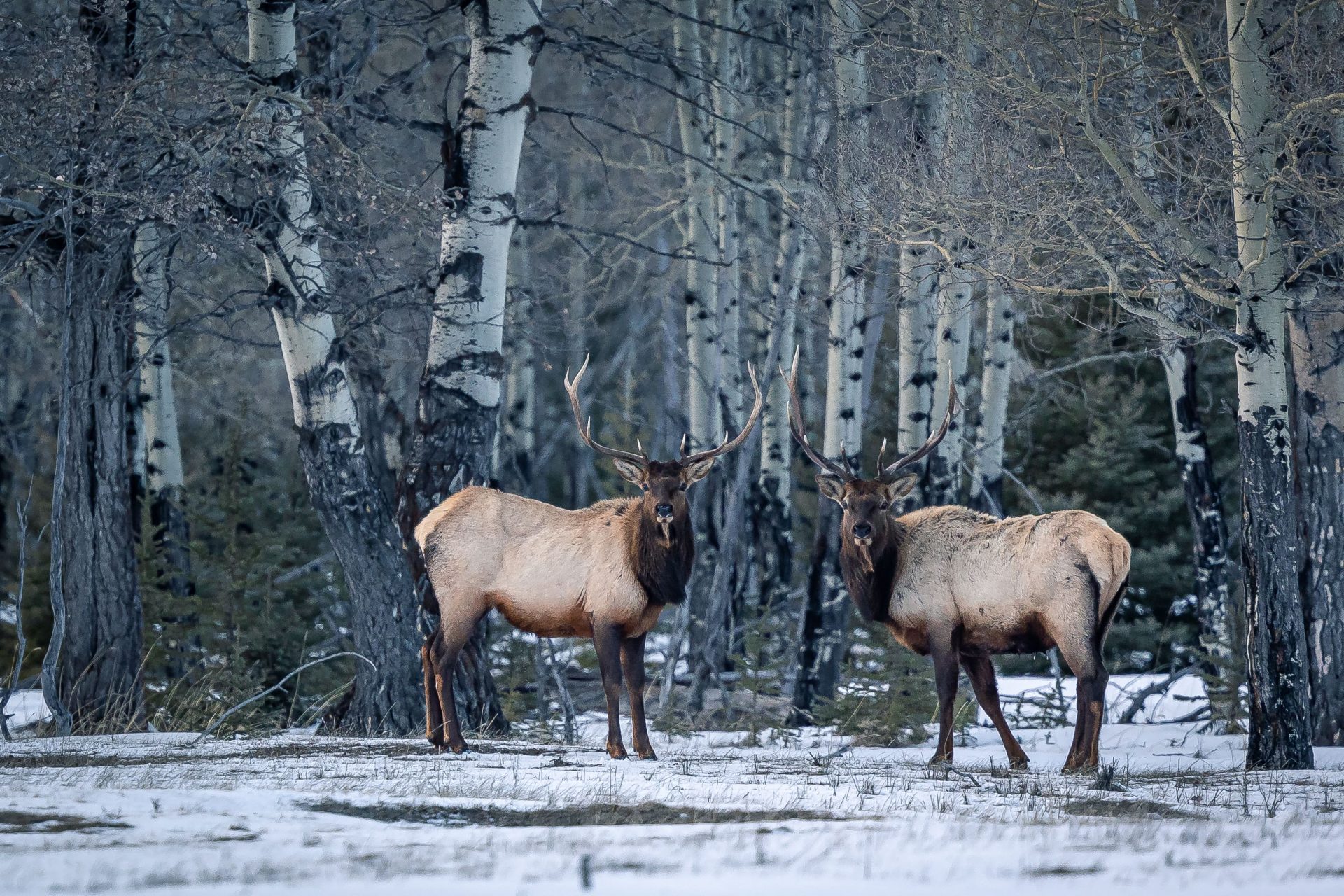
Skiing in Canada offers some of the most picturesque environments, with beautiful mountain ranges, opportunities to glimpse local wildlife like grizzly bears, elk, deer, and moose, and even a chance to see the Northern Lights if you get lucky. Many Canadian ski resorts like Lake Louise Ski Resort, AB, Kicking Horse Mountain Resort, BC, and many more are located within National Parks. Nearby, there are many other stunning attractions like the town of Banff, AB, glacier-fed Lake Louise, and Moraine Lake, AB, and more, so even if you take a day off from skiing, you’ll have plenty to do and explore.
Poutine, the classic Canadian dish of fries, gravy, and cheese curds, makes for a perfect après-ski snack, but you’ll also have plenty of other options for a great meal. Canadian ski resorts tend to have many options for a hearty meal, including vegetarian, vegan, and gluten-free foods, so you shouldn’t have any trouble grabbing a delicious bite. Many Canadian ski resorts also serve local brews from breweries in the area and local coffee as well. In addition to excellent local cuisine, the locals themselves are incredibly welcoming and truly embrace a great ski community culture. The author of this article is herself a Canadian skier, and can confirm that we are friendly and love meeting tourists exploring our beautiful mountains! Lastly, another convenient benefit of skiing in Canada is that you won’t need to worry about tackling the language barrier that accompanies traveling to Europe or Japan.
Book Your Canadian Adventure Today
The Canadian ski season lasts from November to May, with some resorts opening as soon as November 10th, so if you want to take advantage of the pre-season savings on lift tickets, act quickly. Many resorts are offering significant savings on passes purchased before mid-October (October 11th is a common cut-off date for pre-season sales), and you can often buy your tickets without specifying the days that you want to ski, so you can buy now and confirm the details of your trip later. Visit Ski.com to connect with a Mountain Travel Expert who can help you secure the best deals on lift tickets, accommodations, heli-skiing and cat-skiing packages, and more.
